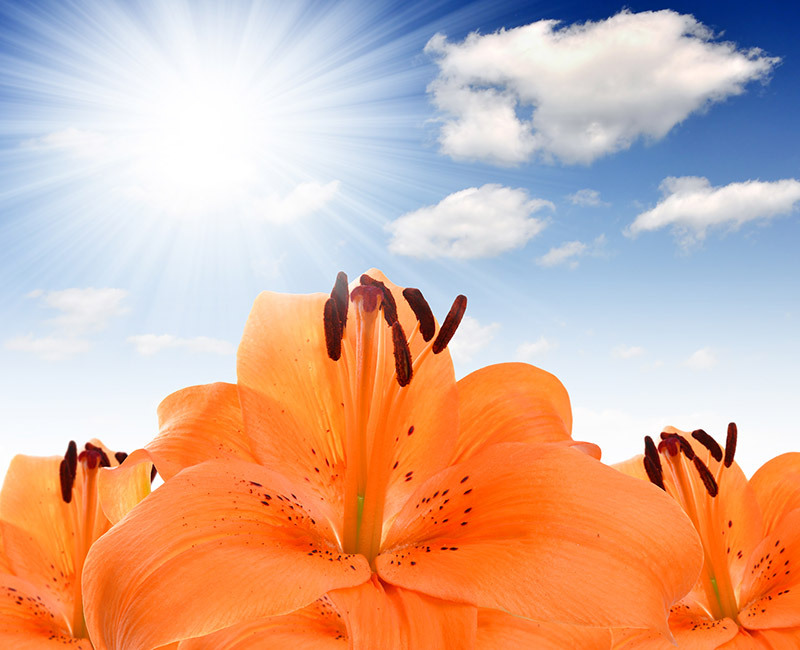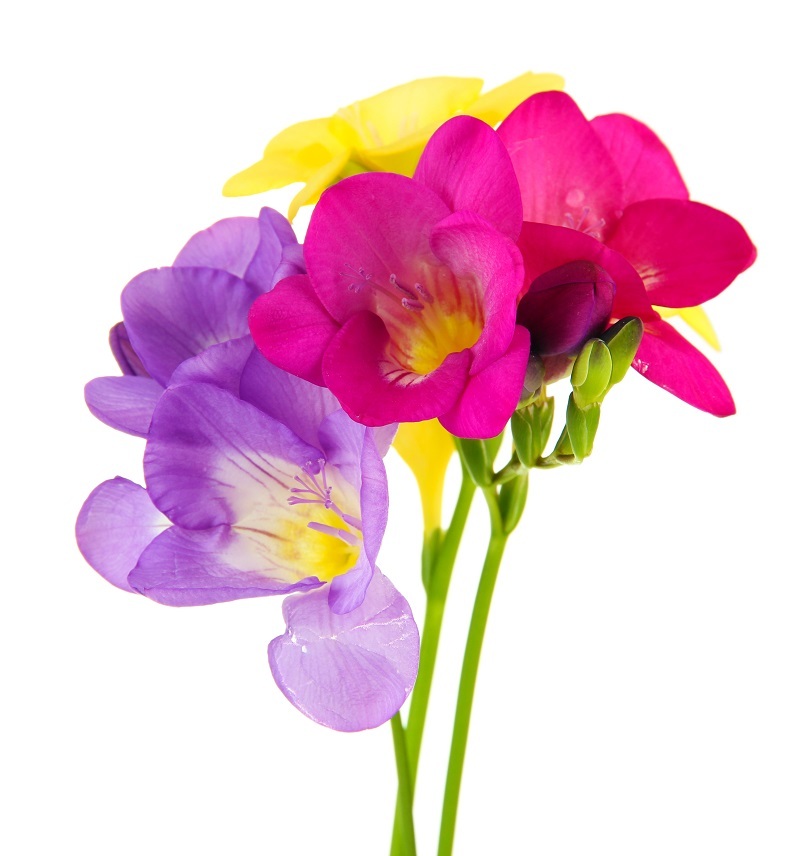Eight astonishing sunflower facts you won't believe
Posted on 13/08/2025
Eight Astonishing Sunflower Facts You Won't Believe
If you've ever strolled through a glowing field of sunflowers, you know they're more than just beautiful blooms. But did you know that sunflowers are full of surprises that go far beyond their golden petals? In this comprehensive guide, we'll share eight mind-blowing sunflower facts you probably haven't heard--each more intriguing than the last. Whether you're a gardening enthusiast, a nature lover, or simply curious, these sunflower secrets will inspire awe and appreciation for this remarkable plant.
1. Sunflowers Are Superheroes of the Plant World
Sunflowers do much more than brighten up a garden--they can clean toxic soil! Few people know that sunflowers (Helianthus annuus) have been used in phytoremediation, a process where plants are utilized to remove contaminants from soil, water, and air.
- Following the Chernobyl nuclear disaster, scientists planted vast arrays of sunflowers to help extract radioactive isotopes like cesium-137 and strontium-90 from the earth. Their deep roots absorb toxins, making them essential for environmental cleanup.
- Sunflowers are used globally to treat soil polluted with heavy metals such as lead, arsenic, and uranium.
Next time you spot a sunflower, remember: it might just be purifying the ground beneath your feet!

2. Sunflowers Track the Sun--A Phenomenon Called Helotropism
One of the most iconic and fascinating sunflower facts is their innate ability to follow the sun. This unique behavior is scientifically known as heliotropism.
- During the growing phase, sunflower buds literally turn their faces from east to west throughout the day, following the path of the sun.
- This movement is believed to help maximize photosynthesis, promoting faster growth and sturdier stems.
- As sunflowers mature and their massive bloom develops, they naturally settle facing east to attract more pollinators in the warm morning sun.
Heliotropism is not only an incredible sight but also a prime example of how plants actively adapt to their environment for optimal growth.
3. Sunflowers Are More Than Just Yellow
When you picture a sunflower, you might envision a classic yellow bloom. Prepare to be amazed! Sunflowers come in a variety of vibrant colors that extend well beyond golden hues.
- Sunflower varieties include red, orange, bronze, cream, and even deep burgundy petals.
- The 'Moulin Rouge' and 'Cherry Rose' cultivars, for instance, boast dramatic maroon and dusty pink tones.
- Gardeners often plant multi-colored sunflower seeds to create eye-catching displays and bouquets all season long.
So, the next time you buy sunflower seeds, look for unique cultivars that can transform your garden into a kaleidoscope of color!
4. Sunflowers Can Tower Over Humans
While tiny dwarf sunflowers are perfect for pots and small gardens, giant sunflowers can reach extraordinary heights.
- On average, common sunflowers grow between 5 and 12 feet tall.
- The Guinness World Record for the tallest sunflower ever grown is a staggering 30 feet and 1 inch! This record-breaking sunflower was grown by Hans-Peter Schiffer in Germany (2014).
- Sunflower stalks can grow so thick and sturdy that children and adults alike often marvel at their tree-like strength.
If you're looking to add a statement piece to your backyard, plant a giant variety and see how tall your sunflower can grow!
5. Sunflowers Support Biodiversity
Sunflowers are crucial to ecosystems and support a diverse web of life. Here's how:
- Their nectar-rich flowers are a favorite food source for bees, butterflies, and other essential pollinators.
- Birds flock to sunflower heads as seeds mature, providing nutrition for species like finches, chickadees, and grosbeaks.
- Sunflower fields can serve as habitats and shelters for many small organisms, enriching local biodiversity.
Planting sunflowers can help your garden become a haven for wildlife and boost pollination rates for fruits, vegetables, and other flowering plants.
6. Sunflower Seeds: Edible, Nutritious, and Versatile
Sunflower seeds aren't just a snack; they're a nutritional powerhouse and used in countless ways worldwide.
- Sunflower seeds contain healthy fats, proteins, fiber, and vital nutrients, like vitamin E, selenium, and magnesium--making them a superfood.
- Roasted and salted seeds are a popular snack, but they're also used in salads, granola, baking, and as tasty sunflower butter (a nutty spread alternative).
- In Eastern European and Asian cuisines, sunflower oil--a heart-healthy, mild-flavored oil--is a cooking staple and salad dressing ingredient.
- Every part of the sunflower is useful: petals for natural dyes, stalks for livestock fodder, and seeds for oil or eating.
7. Sunflowers Boast a Rich Cultural and Historical Legacy
The relationship between humanity and sunflowers extends back thousands of years, full of rich symbolism and cultural importance.
- Native Americans domesticated sunflowers over 4,500 years ago, valuing them for food, oil, medicine, and textile dyes.
- Sunflowers symbolize happiness, admiration, and longevity in many cultures. In Chinese folklore, sunflowers represent good luck and lasting happiness.
- The famous artist Vincent van Gogh immortalized sunflowers in his celebrated paintings, using their bold forms and colors to represent hope and warmth.
- Modern-day festivals celebrate the sunflower season, with communities hosting sunflower mazes, art shows, and culinary events worldwide.
Sunflowers have been cherished for both their practical and inspirational qualities for centuries--and their cultural significance continues to grow.
8. The Sunflower Is a Mathematical Marvel
*Prepare to be amazed by the hidden patterns in sunflowers!* The arrangement of seeds in a sunflower head isn't random--it's a masterpiece of mathematics.
- Sunflower seed spirals follow the Fibonacci sequence, a series of numbers where each number is the sum of the two before it: 1, 1, 2, 3, 5, 8, and so on.
- This spiral configuration allows sunflowers to pack the maximum number of seeds efficiently into the flower head, optimizing every bit of space.
- This mathematical precision can be seen in countless other natural forms, but is especially pronounced and visually stunning in the humble sunflower.
The next time you look at a sunflower, take a moment to admire the intricate geometry--a living demonstration of the harmony between nature and mathematics.

Frequently Asked Questions: More Fascinating Sunflower Facts
What are some other interesting uses for sunflowers?
- Sunflower petals can be used for natural fabric dyes.
- The oil is not only heart-healthy but is also used in eco-friendly soaps and cosmetics.
- Sunflower stems can be made into paper or used as biodegradable garden stakes.
Can you grow sunflowers indoors?
Certain dwarf and potted varieties are perfect for windowsills and balconies. Provide ample sunlight, water regularly, and watch your indoor sunflower thrive!
Are sunflower seeds safe for pets?
Unsalted and unflavored sunflower seeds can be offered as treats to birds and some small animals. Always check with your veterinarian before sharing with pets, as shells can be a choking hazard.
Conclusion: Sunflowers--Nature's Brilliant All-Rounder
Who would have imagined that sunflowers were packed with so much mystery, usefulness, and beauty? These eight astonishing facts show that sunflowers are not just pretty faces. From supercharged environmental clean-up to mathematical genius, their surprises seem to never end.
- They clean our world and beautify our landscapes.
- They support pollinators and wildlife, contribute to our diets, and inspire art and culture across the globe.
- They even reveal secrets of math and science hidden in their spiral seed patterns!
Whether you're growing sunflowers, eating their seeds, or simply admiring a field of golden blooms, you're engaging with a plant that has enchanted humanity for thousands of years--and continues to astound us every day.
Share these astonishing sunflower facts with your friends and family--let the world know that sunflowers are as amazing as they are beautiful!
Latest Posts
The Story Behind Red Roses as Valentine's Tokens of Love
What Do Peony Colors Say? A Dive into Flower Symbolism
Eight astonishing sunflower facts you won't believe
Discover How to Extend Your Flowers' Lifespan
Your Birth Flower's Message: What Does It Reveal About Your Nature





